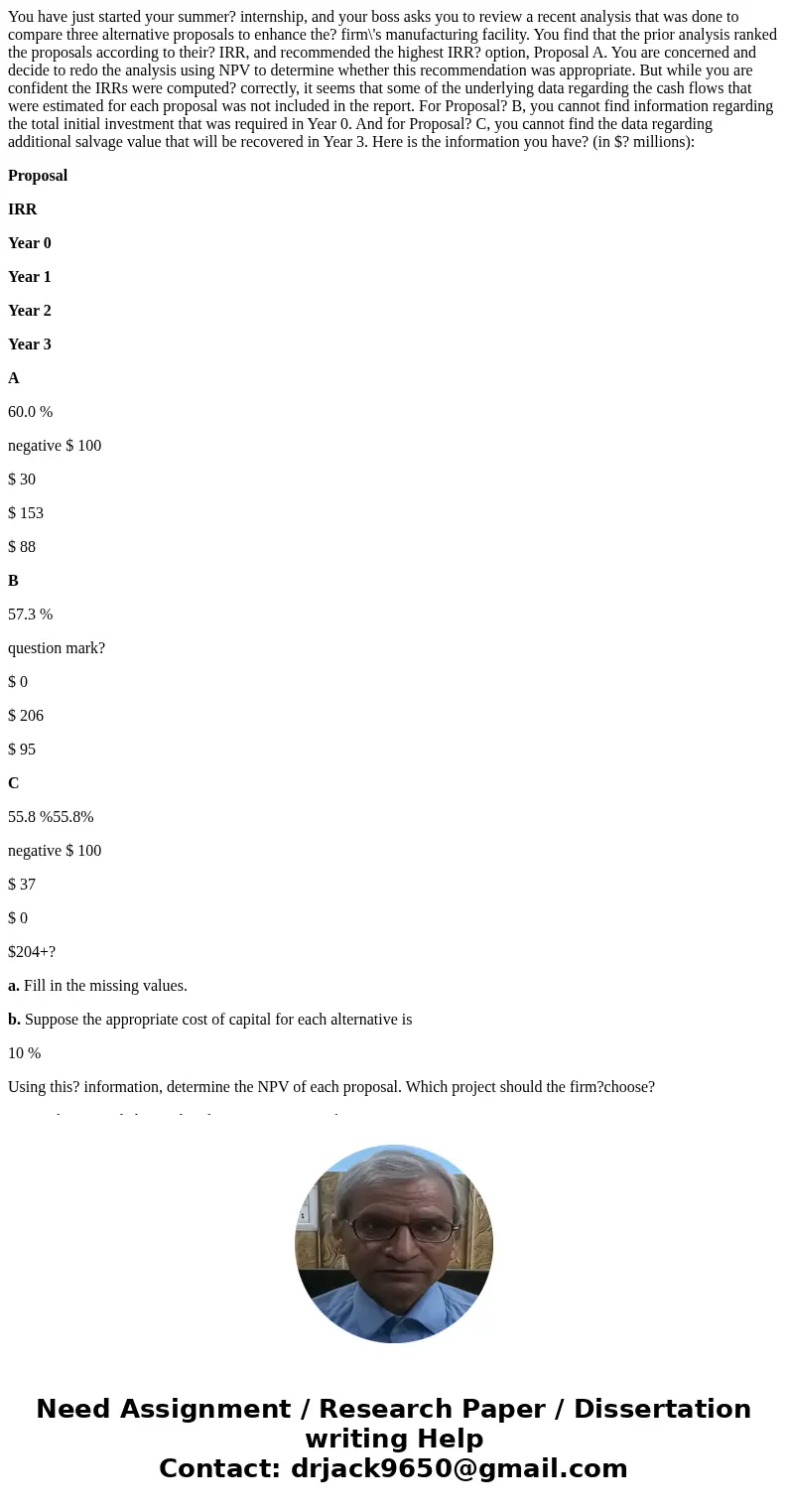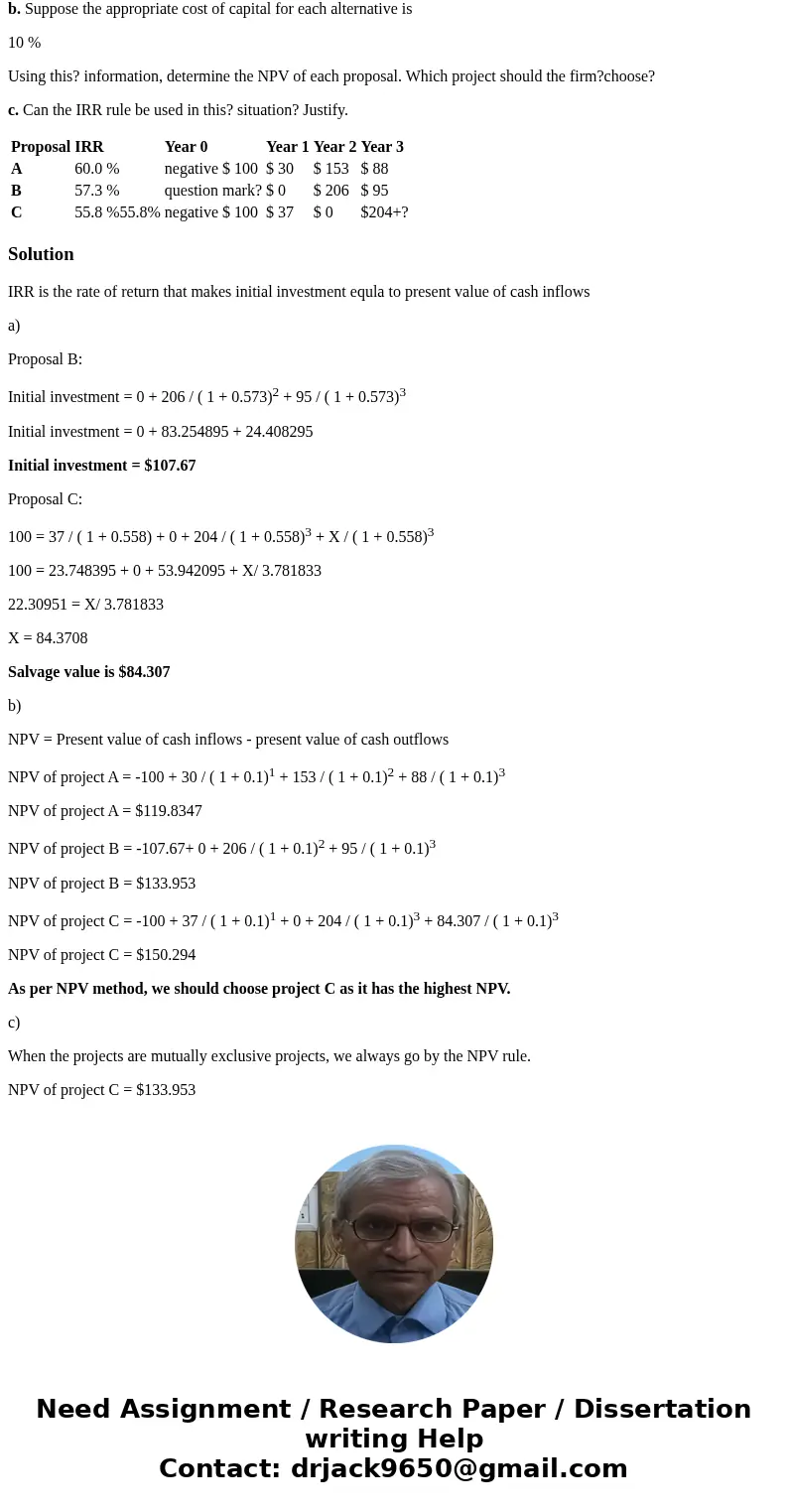You have just started your summer internship and your boss a
You have just started your summer? internship, and your boss asks you to review a recent analysis that was done to compare three alternative proposals to enhance the? firm\'s manufacturing facility. You find that the prior analysis ranked the proposals according to their? IRR, and recommended the highest IRR? option, Proposal A. You are concerned and decide to redo the analysis using NPV to determine whether this recommendation was appropriate. But while you are confident the IRRs were computed? correctly, it seems that some of the underlying data regarding the cash flows that were estimated for each proposal was not included in the report. For Proposal? B, you cannot find information regarding the total initial investment that was required in Year 0. And for Proposal? C, you cannot find the data regarding additional salvage value that will be recovered in Year 3. Here is the information you have? (in $? millions):
Proposal
IRR
Year 0
Year 1
Year 2
Year 3
A
60.0 %
negative $ 100
$ 30
$ 153
$ 88
B
57.3 %
question mark?
$ 0
$ 206
$ 95
C
55.8 %55.8%
negative $ 100
$ 37
$ 0
$204+?
a. Fill in the missing values.
b. Suppose the appropriate cost of capital for each alternative is
10 %
Using this? information, determine the NPV of each proposal. Which project should the firm?choose?
c. Can the IRR rule be used in this? situation? Justify.
| Proposal | IRR | Year 0 | Year 1 | Year 2 | Year 3 |
| A | 60.0 % | negative $ 100 | $ 30 | $ 153 | $ 88 |
| B | 57.3 % | question mark? | $ 0 | $ 206 | $ 95 |
| C | 55.8 %55.8% | negative $ 100 | $ 37 | $ 0 | $204+? |
Solution
IRR is the rate of return that makes initial investment equla to present value of cash inflows
a)
Proposal B:
Initial investment = 0 + 206 / ( 1 + 0.573)2 + 95 / ( 1 + 0.573)3
Initial investment = 0 + 83.254895 + 24.408295
Initial investment = $107.67
Proposal C:
100 = 37 / ( 1 + 0.558) + 0 + 204 / ( 1 + 0.558)3 + X / ( 1 + 0.558)3
100 = 23.748395 + 0 + 53.942095 + X/ 3.781833
22.30951 = X/ 3.781833
X = 84.3708
Salvage value is $84.307
b)
NPV = Present value of cash inflows - present value of cash outflows
NPV of project A = -100 + 30 / ( 1 + 0.1)1 + 153 / ( 1 + 0.1)2 + 88 / ( 1 + 0.1)3
NPV of project A = $119.8347
NPV of project B = -107.67+ 0 + 206 / ( 1 + 0.1)2 + 95 / ( 1 + 0.1)3
NPV of project B = $133.953
NPV of project C = -100 + 37 / ( 1 + 0.1)1 + 0 + 204 / ( 1 + 0.1)3 + 84.307 / ( 1 + 0.1)3
NPV of project C = $150.294
As per NPV method, we should choose project C as it has the highest NPV.
c)
When the projects are mutually exclusive projects, we always go by the NPV rule.
NPV of project C = $133.953


 Homework Sourse
Homework Sourse